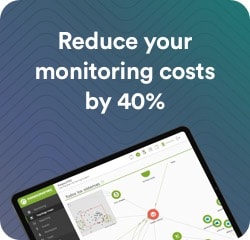Madrid, August 3, 2022.-The Spanish tourism sector is preparing for a record-breaking summer in which they hope to emulate the summer periods prior to the COVID pandemic. The Government has already announced that 90% of foreign tourism will be recovered that in 2019 visited the country. That year 84 million foreigners were received, a figure they intend to reach this year taking advantage of the high temperatures and the national tourist offer. Therefore, the administrations of the main tourist points are being reinforced with the technology necessary to control the capacity with the aim of improving the performance of public services and minimizing the environmental impact.
There are increasingly more municipalities that are choosing to install monitoring systems that collect all of that data in real time and allow to manage it from a central console. Monitoring, present in most companies to improve their IT infrastructure management, collects all data generated on a steady basis and manages them from that central system. That way, it is possible to have much more easy and direct access to all of the information collected and the response capacity is improved should any anomaly be detected.
The importance of monitoring in companies has spurred the interest of the administration to improve the efficiency of their services and they now apply this technology for the management of their beaches. The municipalities of very busy tourist areas have special interest in finding out the status of the points with more affluence and focus on beaches, where systems are already being implemented to monitor the state of each sandbar and control the capacity. Thus, in addition to measuring how many tourists visit a place in a given time slot, it is possible to minimize the environmental impact on the territory by establishing precise means to improve the environmental protection of the beaches as well as the fauna and flora that inhabit them.
“Monitoring is a reality you may find present in the private sector but becoming very popular in the public one too, through which we improve the control we have over touristic points where we receive large crowds of people. With these systems we’re able to calculate how many people there are in a beach at a certain time. And then we can improve the efficiency of the health and security services, or just limit the capacity of any of those areas if the environmental impact becomes alarming,” explains Sancho Lerena, CEO of Pandora FMS, who monitors systems from giants like Rakuten or Toshiba, in addition to public administrations such as Madrid Digital or hospitals.
These monitoring systems are being installed in several parts of the country. On the beaches of Mallorca, for example, the Coastal Observation and Prediction System of the Balearic Islands will be installed. With this mechanism, the administration will allow tourists to share pictures taken from the same point of the beach, allowing to see the evolution of the landscape to control its pollution and leaving a record of the capacity that there is every hour on the beach.
This same experiment based on monitoring will also be present in points of Galicia, specifically in Vigo, or on beaches of Valencia. The two main objectives in all cases are to control the environmental impact and the approximate capacity on each beach in different time slots to be able to manage public services in the most efficient way.
Gran Canaria, likewise has invested 500.000 euro in a system to monitor very frequented beaches such as Las Canteras, Alcaravanera and La Baja. On the other hand, Barcelona will use drones, after investing almost 170.000 euro, to measure the capacity of each beach with no need for identifying the population. In both situations, monitoring will be key for collecting all data and allowing the authorities to intervene accordingly.
“Monitoring processes are daily life, it is normal for administrations and tourism companies to stick to this type of systems”, recognizes the CEO of Pandora FMS. “Monitoring allows access to information by a single means. In this case, a computer where all the data generated is right then collected and that, if there were no monitoring system, it would have to be collected from each specific console. Thus, if there is an alert in a specific area, you may start working from the center console and warn the rest of the areas”, says Lerena.
Tourist wave
The summer of 2022 was raised as the return to full normality, also in the economic field. However, the outbreak of the Russian invasion of Ukraine and the subsequent inflationary wave raised fears of a new crisis from May to the present. Despite this, the Government has reaffirmed that the Spanish economy is “strong” and tourism has been placed as one of the engines of these coming months.
The forecasts of the Executive go through recovering nine out of ten foreign tourists who visited Spain in 2019, the year in which 84 million people were received throughout the whole year. At the moment, it is estimated more than 20 million airline seats have already been reserved for the coming months. In addition, there are options for domestic tourism to also grow by 3%, so the economy will not only be driven by foreign population.









